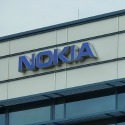Using software platform's three-year track record, Nokia intends to spur virtualization rollouts by focusing on specific use cases, like IoT.
April 18, 2016

Nokia today provides the first view of its post-merger virtualization management and orchestration strategy, launching the updated CloudBand portfolio, the combination of its software products, centered on the core Alcatel-Lucent software platform and intended to continue that product's momentum and maintain its competitive edge in this critical area.
Nokia Corp. (NYSE: NOK) also is indicating a new strategy that focuses on helping network operators roll out virtualization for specific use cases, many of which are targeted at the Internet of Things and the mobile network. CloudBand brings three years of real-world experience and operator relationships into the Nokia fold to fuel that strategy, providing integration and visibility across the layers of the network, once the hardware, cloud software and applications have all been separated. (See Telefónica Taps Nokia for IP Core, Virtualized Router.)
"We have a lot of experience in how to actually now connect those pieces, so there is at least visibility to the operators of each layer so they can see what is happening in the other domains," Ron Haberman, VP of Nokia's CloudBand Business Unit, tells Light Reading in an interview. "We have the ability to operationalize a particular use case. And that is how we see most operators moving forward, on a use-case basis."
Layering for warmth
The integrated CloudBand software portfolio uses the pieces of the AlcaLu product line -- its CloudBand Node and Manager, which provides the NFV-Infrastructure, Resource Management and management/orchestration functions -- in combination with VNFs and some upper-level applications programming interfaces that Nokia developed. It retains a three-layer structure and its use of OpenStack as a common platform, albeit with carrier-grade additions from Nokia and an ongoing focus on open source projects to which Nokia is making significant contributions. (See Validating Nokia's IP Routing & Mobile Gateway VNFs.)
The three layers include the CloudBand Infrastructure, which is the Virtual Infrastructure Manager, or VIM software layer; the CloudBand Application Manager, which is a fully open VNF manager for anyone's VNFs, including Nokia's; and the CloudBand Network Director, which provides overall service and resource orchestration including service-chaining. Nokia is also offering a certification process for those third-party VNFs.
Learn more about the future of open source in telecom at our upcoming Big Communications Event in Austin, TX, May 24-25. You can register now.
Haberman says the product lines came together nicely, retaining "the best of both worlds" in using AlcaLu's CloudBand node software and broadband management system, which delivered resource management for the distributed cloud, while combining the separate VNF managers the two company had developed. Nokia's was developed internally and used a different domain-specific language from the OpenStack-based CloudBand, but it had some stronger upper-layer APIs, he says, which could strengthen the CloudBand Application Manager. That retains its OpenStack roots, using the open source components on which Alcatel had built, including HEAT, the main project in the OpenStack orchestration system; Mistral, the workflow service that manages the multiple separate steps in a virtualization process; and others. (See Alcatel-Lucent Teams With Red Hat, Advantech & 6WIND for vRAN.)
OpenStack concerns
Acknowledging the telecom carriers' concerns about the limitations of OpenStack, where their specific needs are concerned, Haberman says that is where Nokia is strongest -- in creating a true carrier-class OpenStack. In addition to involvement in contributing to Mistral and many other OpenStack projects, the vendor has worked for the past three years to hone its strategy, working with Red Hat among others.
"It is easy to say we do OpenStack but very difficult to get it up and running, and do it in automated and repeatable, and a fashion that provides a lot of visibility on how the different layers interoperate and how well it is configured to run the VNFs," he says. Through CloudBand's three years of experience, Nokia now has the ability to make different layers work together as needed for specific use cases, while providing operations organizations the visibility they require. "There is a lot of culture change in how networks need to be operated, as you are going from being in charge of the entire stack to a separation of that hardware, the cloud software and the applications themselves," he comments. "We have a lot of experience into how to actually now connect the pieces."
That includes delivering the tools that upgrade a plain vanilla OpenStack to a carrier-grade model, Haberman says, with the key tools operators want such as automated installation, in-service upgrades, different types of packet acceleration techniques, the ability to add monitoring and storage for integrated solutions and more.
"That's what we bring to the table, the ability to add the missing pieces and put them together in such a way that you get a carrier-grade OpenStack," he says.
As for those use cases, Haberman sees VoLTE as "the darling" of the virtualization world, in part because it is a new application that is growing, but includes virtual CPE and the growing IoT realm as other likely targets.
"The market has very specific targets in what it is trying to achieve," he says. "As we progress toward real implementations of IoT -- the requirements of what you need for very specific use cases around IoT and deployment of next-gen model backend drives the use-case requirements to be much more narrow in focus."
That creates a landscape in which operators can actively work in virtualization, build up their confidence and comfort level and try out the new tools, he says.
— Carol Wilson, Editor-at-Large, Light Reading
You May Also Like









